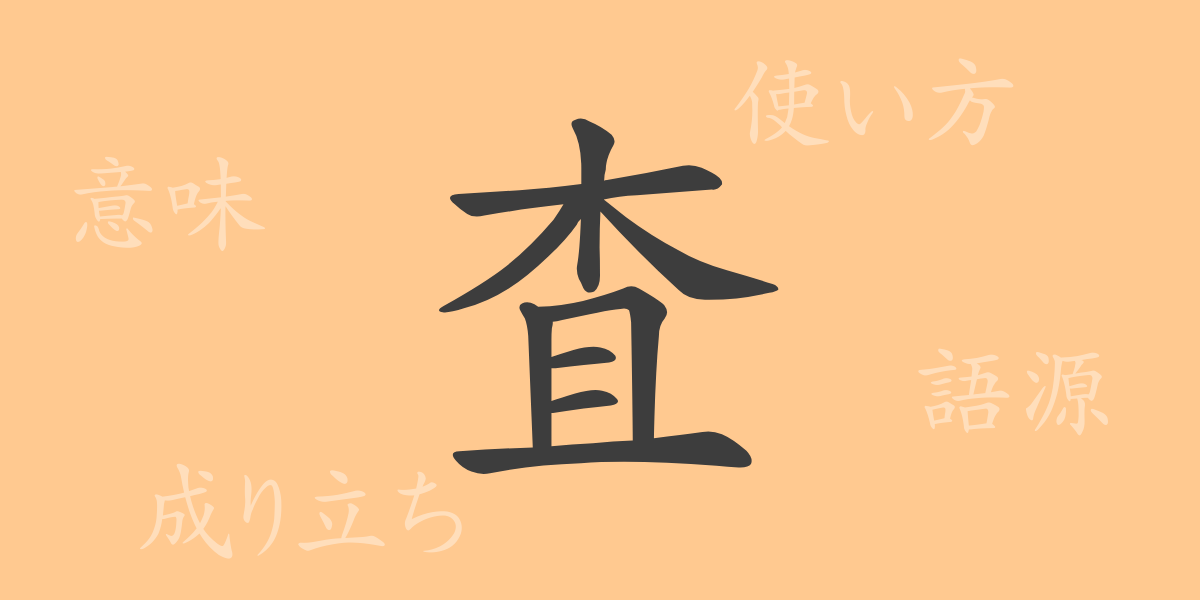The essential kanji characters that underpin Japan’s rich culture. Among them, “査(さ)” is one of the key kanji frequently used in daily life and business settings. This article explores the full scope of the kanji “査(さ),” from its origins and meanings to its usage in various idioms and proverbs. By the end of this read, you will have a deeper understanding and better command of “査(さ).”
Origins of 査(さ)
How did the kanji “査(さ)” evolve to its current form? Its origins can be traced back to ancient China. The character “査(さ)” is composed of the radical “木(き)” meaning “tree,” and the phonetic component “且(しょ)” which means “furthermore.” The combination of these elements conveys the idea of examining something carefully over time.
Meaning and Usage of 査(さ)
The kanji “査(さ)” means “to investigate,” “to examine,” or “to inspect.” It is commonly used in business and official documents to indicate thorough examination or scrutiny. It also appears in specialized fields, such as in “査定(さてい)” (assessment) and “査読(さどく)” (peer review).
Readings, Stroke Count, and Radical of 査(さ)
The basic information about the kanji “査(さ)” is as follows:
- Readings: The on’yomi (音読み) is “サ(さ),” and it has no kun’yomi (訓読み) reading.
- Stroke count: “査(さ)” consists of 9 strokes.
- Radical: The radical is “木部(きへん),” meaning “tree.”
Idioms, Phrases, and Proverbs Using 査(さ)
Idioms and phrases that include the kanji “査(さ)” are very useful for understanding its meaning. Here are some examples:
- 査定(さてい): To assess the value or results of something.
- 査読(さどく): To review the content of academic papers by experts.
- 審査(しんさ): To rigorously examine and evaluate.
- 検査(けんさ): To check the health condition or quality of an object.
Conclusion on 査(さ)
The kanji “査(さ)” is an indispensable part of our lives. Its usage spans from official documents to everyday conversations. Through this article, we hope you have gained insights into the meaning, usage, idioms, and proverbs related to “査(さ).” By appreciating the history and culture embedded in each kanji, we can continue to cherish the rich tapestry of the Japanese language.

























